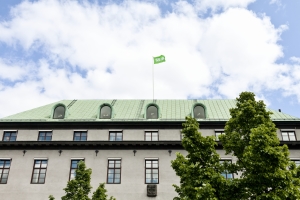SEB tempted into early Tier 2 prefinancing
Skandinaviska Enskilda Banken (SEB) took advantage of attractive funding available in Tier 2 to prefinance a 2017 call with a punchy Eu850m 12 year non-call seven subordinated issue on 24 October that underlined the tight levels achievable by top Nordic names.
SEB had announced its third quarter results four days before launch, on 20 October, and as one of the first European banks to emerge from its silent period, the Swedish issuer could tap a window ahead of its peers — the trade was the first euro Tier 2 benchmark since LBBW sold a Eu500m 10 year bullet on 19 September.
According to John Arne Wang, head of funding and liquidity management at SEB, the bank felt that the levels available were too good to miss.
“The rationale for going to the market was not because we needed to raise any capital right now — far from it — but was purely based on how attractive we considered levels to be,” he said. “The transaction is to refinance a call coming up way into 2017 — in September 2017 — but even taking into account the negative carry we would have until then versus senior, the levels available looked quite attractive.”
Wang added that SEB also took into account the swings in Tier 2 spreads that have been a characteristic of much of 2016.
“There has been a lot of uncertainty when it comes to valuation of Tier 2s,” he said. “After a rather volatile spring, we saw Tier 2s trading way too cheaply in June, when everything else had rallied. That changed significantly during the summer months, when Tier 2 spreads tightened substantially, but we decided to prioritise a dual-tranche senior dollar benchmark which we went out with in early September.”
A further hurdle emerged on 20 September when the Swedish government fleshed out plans to end the tax deductibility of coupon payments on subordinated debt, which the country’s banks had lobbied against. This raised concerns that tax calls on outstanding Swedish Tier 2 securities could be exercised, hitting their spreads — even those, such as SEB’s, without tax calls — in a market also feeling the fall-out of renewed concerns around Deutsche Bank’s capital situation.
However, the market then settled down and provided the opportunity for SEB to tap the market after announcing its results.
“We didn’t necessarily think that the market would turn again, but we felt that it had improved for some time and conditions looked quite promising, and this is the type of instrument that you want to issue when the market is constructive on all fronts,” said Wang.
Lead managers Bank of America Merrill Lynch, BNP Paribas, JP Morgan, SEB and UBS went out with initial price thoughts of the 150bp over mid-swaps area for the Eu850m 12 non-call seven transaction, rated Baa1/BBB+/A+, and were ultimately able to price the issue at 135bp over on the back of over Eu2.2bn of orders from almost 160 investors.
Bankers away from the leads said the new issue premium was minimal and well inside the 10bp-20bp levels that other issuers might pay on subordinated issuance.
“When you think pretty much everyone who is coming in senior is paying 10bp new issue premiums, to get a sub deal away at their level is impressive,” said one. “One reason is that there hasn’t been many deals, so there is pent-up demand.
“But I think it is mainly that that region is just seen as very high quality, or rather, very low volatility.”
Wang said he saw the new issue premium in the low single-digits.
“I think it illustrates the fact that we represent a very strong credit,” he said, “and in the capital space in general we are a rare issuer with fairly limited outstandings. There has been rather significant ongoing demand for Tier 2 as well as AT1 from high quality issuers, and on that basis I don’t find it that surprising that the NIPs then become quite compressed.”
The Tier 2 is SEB’s first since May 2014. The Eu850m size was dictated by next year’s Eu750m call and SEB’s expected medium term Tier 2 needs, according to Wang.
Asset managers were allocated 64.3% of the new issue, pension funds and insurance companies 23.6%, banks 7.9%, hedge funds 2.1%, SSAs 1.2%, and corporates 0.9%. France took 32.3%, Germany 20.8%, the UK and Ireland 14.5%, the Benelux 12%, Finland 5.4%, Italy 4.1%, Switzerland 3.3%, Spain 2.5%, Sweden 1%, Canada 0.8%, Asia 0.3%, and others 3.0%.

